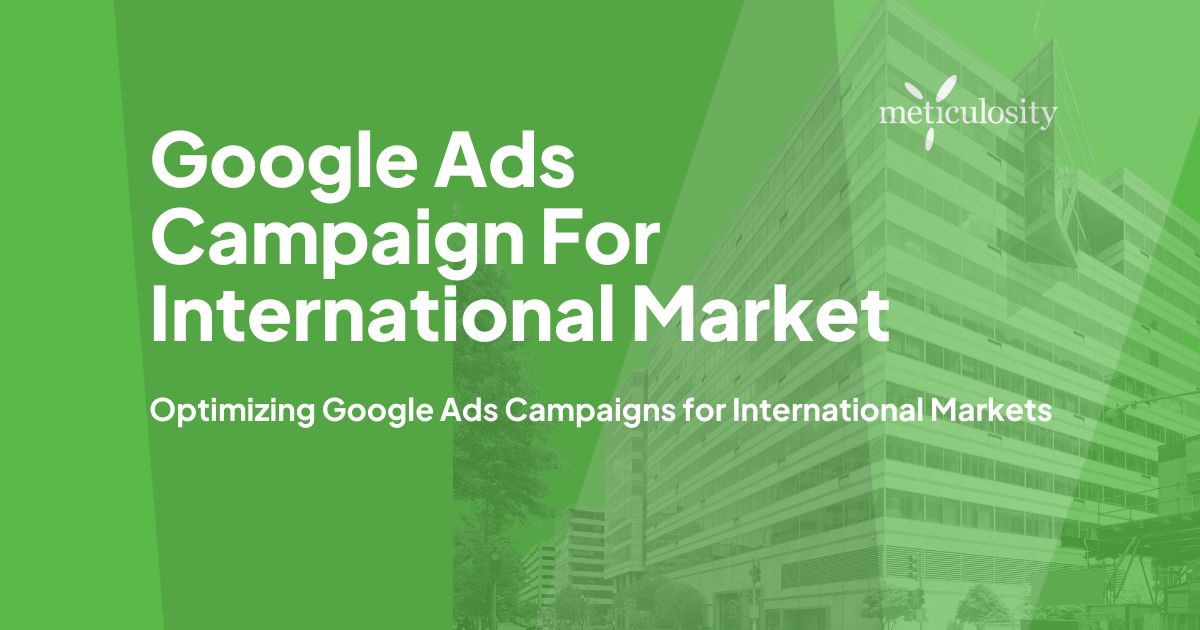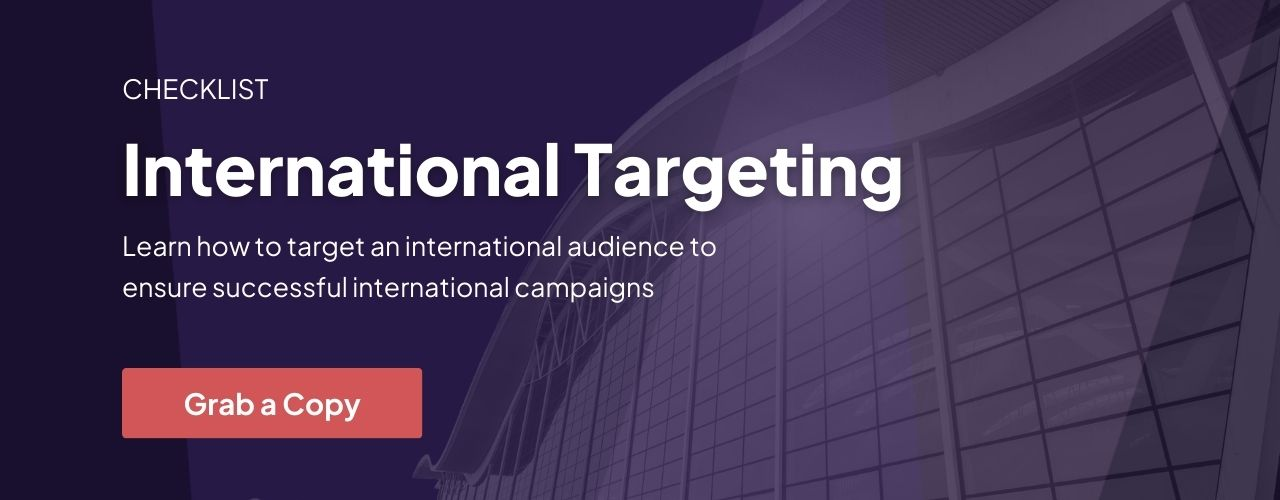When it comes to marketing your business internationally, there are a number of challenges you will face. From understanding different ad campaigns and how they work to setting up targeting options, Google Ads is a robust marketing platform that can help you reach your goals.
In order to make the most of this platform, continuous optimization is key. Even a small oversight can hurt the return on investment (ROI) of your campaign.
Let’s take a look at some of the basic steps you need to take in order to run an effective Google Ads campaign for your international market.
Running an International Google Ads Campaign
Targeting a global audience can be a daunting task, but with the help of a Google Ads campaign, it's absolutely attainable. By selecting the right ad formats, targeting specific keywords, and doing some research, you can create an ad campaign that targets your target market successfully.
Before starting the ad campaign, make sure to have an understanding of the market you're targeting. This will help you choose the right ad campaign goals and ad formats for your audience.
Here are a few tips to help you make the most of your international Google Ads campaigns.
1. Create Separate Campaigns for Each Location
When it comes to content marketing, targeting the right audience is essential. However, this isn't easy when you're promoting your offerings across different countries. This is because Google Ads has different bidding and targeting options for each market. This means that you will need to create separate campaigns for each country in order to achieve desired results.
%20(25).png?width=900&name=Blog%20Cover%20(900%20%C3%97%20300%20px)%20(25).png)
There are various ways you can go about doing this - you may create ads with slightly different target keywords depending on the region you're targeting. If you are targeting multiple languages, create separate campaigns for each language and optimize them accordingly.
With a tailored campaign, hitting your advertising goals should be much easier. However, if you are going to be using a different language for your ads, it’s highly recommended to use a professional translator so that your ads sound local and are culturally appropriate.
Google Ads also allows you to reach expatriates with location and language targeting, such as English speakers who live in Germany. To reach your English-speaking audience in Germany, you can target your location as "Germany" and language as "English."
By setting up a separate campaign for each location and language, you make it easier to manage your account and track each region’s ROI. It also means that you can create customized and targeted campaigns by tailoring your keywords and ad text to each individual market. Separate campaigns can help you track, expand, and refine your ads in each language.
2. Create Keywords Lists and Ad Texts
To successfully run an ads campaign on Google, you first need to create a keyword list. Once you have this, it’s important to research the best keywords for your ad campaign.
You will also need to make sure that the ad text is tailored specifically for the geographic region in which your ad campaigns are running. This ensures that your ads are seen and clicked on by potential customers who match those search terms.
Incorporating the right keywords in all languages in your campaign is essential for ensuring they end up in front of the right customers. There are reports within Google Ads that can help you refine your keywords.
The "search terms" report not only makes it easier for you to identify the exact keywords your audience is looking for, but also indicates negative keywords you don’t want your ads to show up for.
-1.png?width=672&name=Blog%20Cover%20(900%20%C3%97%20300%20px)-1.png)
You can create a negative keywords list, including up to 5,000 negative keywords. A robust keyword list, including negative keywords, will ensure that your ads are being targeted to the best possible audience at all times.
Remember to keep the language consistent, with the keywords and the ad texts in the same language. If someone searches for keywords in French, the ads must also appear in French.
3. Make Bid Adjustments
It's essential to make sure that your bids are adjusted to match the location and currency of your target market. Monitoring ad campaign performance regularly is also crucial - if impressions or click-through rates aren't reflecting the desired results, it might be time for you to adjust your bid levels.
There may be several keywords that fit your business, but it’s the top converting keywords you need to focus on. The average position, cost to conversion, and the number of converted clicks are some of the factors to consider while deciding the top-converting keywords.
Once you find out which keywords are outperforming, increasing your bids for them can improve the visibility of your ads. Using mix-matched types for your keywords can help you make the most of your Google Ad spend too.
4. Optimize Landing Pages
Nowadays, customers expect seamless and responsive experiences from the websites they visit. This is especially true when it comes to landing pages - your visitors should be able to easily find what they are looking for, whether on mobile or desktop devices.
To make sure that your landing page looks great on all devices, you need to take account of both the ad copy and the content itself. Make sure that the keywords used in your ads are also mentioned in your content so as to optimize it for search engine optimization (SEO).
As your ads are directly connected to the landing page, it is important to optimize your landing page as well. Your landing page should be relevant to the ad and the content should be optimized for the keywords you are targeting.
5. Utilize Ad Extensions
Ad extensions are a great way to increase the reach of your ads and showcase key information to your target audience. Google Ads are not limited to a line of text and a URL these days. There are many opportunities for you to improve the visibility of your ad – and for an international market, with so many more competitors, ad extensions can help you stand out from the crowd.
Ad extensions help you showcase key information to your target audience, right from your location and phone number to all the products and services you provide and the discounts you offer.
There are many different types of ad extensions available, so it's important that you choose the right one for your business. Some popular ad extension options include sitelink extensions, callout extensions, and structured snippet extensions. By using an extension, you can capture more attention from potential customers and convert more leads into sales.
6. Review Your Campaign Analytics
When it comes to advertising on Google, it's important to understand what works and what doesn't. By analyzing your past campaigns, you can get a good idea of what is and isn't working.
Once you know the basics, it's time to make adjustments. This will help you achieve the best click-through rates (CTRs) and conversions possible.
Google Ads campaigns are a great way to reach new customers and grow your business. However, to make the most of your campaigns, it's important to measure your success.
Once you've determined the right ad copy and budget, adjust them based on the results of your campaigns. Always keep in mind that international marketing is a long-term investment, so be patient and you'll see the results you're hoping for.
7. Research and Understand Your Target Market
It is critical to undertake extensive market research before establishing a Google Ads campaign in a new international region. Learn about the local culture, demographics, shopping habits, and consumer behavior.
Investigate competitors and identify unique selling points that appeal to the target audience. This study will serve as the foundation for creating interesting ad copy and targeting the appropriate keywords.
8. Monitor and Analyze Performance
Monitor the performance of your Google Ads campaigns in overseas areas on a regular basis. Track critical data such as click-through rates, conversion rates, and return on ad spend using analytics tools. Determine trends, patterns, and opportunities for improvement.
Based on the information gathered, modify your campaign settings, targeting, or messaging. Optimizing your efforts on a continuous basis based on data-driven decisions will help you achieve greater outcomes over time.
Get Started With International Google Ads Campaigns
Google Ads campaigns are a great way to reach potential customers in foreign markets. However, like anything else, campaigns need to be well-planned and executed in order to achieve the desired results.
Google is always rolling out new features and extensions to help your ads perform better, so it's always a good idea to keep an eye on all of their announcements and updates.
If you’re feeling unsure of where to start when it comes to creating and optimizing Google Ads campaigns in international markets, contact our Google Ads experts for help, or download our free International Targeting Checklist.








